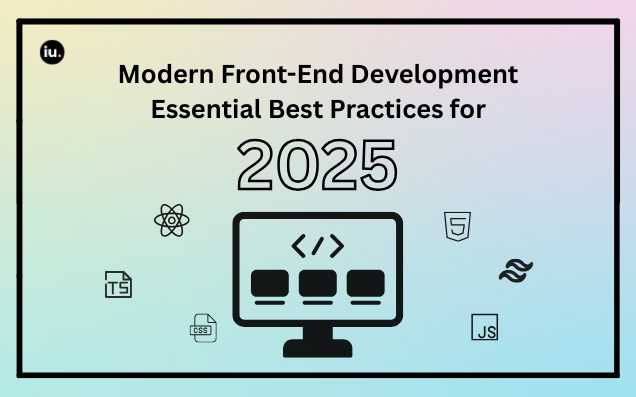Front-end development in 2025 is more dynamic than ever before. With continuous innovation in tools, frameworks, and AI integration, developers must stay updated on the latest strategies. These modern front-end development best practices will help you create accessible, high-performing, and future-proof applications.
Master the Foundations
- Semantic HTML5: Use proper tags and ARIA roles to improve SEO and accessibility.
- CSS3: Utilize CSS Grid and Flexbox for responsive layouts. Enhance design using variables and animations.
- Modern JavaScript (ES6+): Apply features like arrow functions, modules, destructuring, and async/await for cleaner code.
Core Development Skills
- Version Control: Use Git with platforms like GitHub or GitLab.
- CSS Frameworks: Tailwind CSS and Bootstrap for fast, responsive UI design.
- JavaScript Frameworks: React.js dominates, with Next.js, Angular, and Vue.js as strong alternatives.
- State Management: Use Redux Toolkit, Zustand, Context API (React) or NgRx (Angular).
Performance Optimization
- Minimize Assets: Compress images, reduce HTTP requests, and use lazy loading.
- Code Splitting: Optimize with Webpack or Vite for bundle size and speed.
- Performance Audits: Run audits using Lighthouse or Google PageSpeed Insights to fix bottlenecks.
Cross-Browser Compatibility
- Extensive Testing: Ensure UI works consistently on Chrome, Firefox, Safari, Edge, and mobile browsers.
- Dev Tools: Use browser dev tools for layout debugging and responsiveness testing.
Accessibility & Inclusive Design
- WCAG Compliance: Follow accessibility guidelines to ensure usability for all users.
- Keyboard Navigation: Ensure every interactive component works via keyboard alone.
- ARIA Attributes: Use ARIA roles where necessary to improve screen reader support.
AI and Modern Tooling
- AI Features: Integrate chatbots, smart search, and content generation tools.
- ML Libraries: Use TensorFlow.js or ml5.js for client-side machine learning.
- Design Tools: Leverage AI-enhanced tools like Figma and Sketch for intelligent design workflows.
Development Workflow
- Monorepo Architecture: Use tools like Nx or Turborepo for scalable, multi-app management.
- TypeScript: Improve code quality with strong typing and better IDE support.
- Component Libraries: Implement design systems with Shadcn UI, Mantine, or Material UI.
Actionable Tips
- Use semantic HTML for SEO and accessibility.
- Test layouts across devices and screen sizes.
- Minify and split JavaScript/CSS for speed.
- Use CSS Grid and Flexbox for layout design.
- Keep code modular and maintainable.
- Run frequent performance and accessibility audits.
Conclusion
Modern front-end development in 2025 requires mastering fundamentals while embracing cutting-edge tools. By following these best practices, developers can create applications that are efficient, accessible, and adaptable to future needs. Keep learning, keep testing, and build with users in mind.

